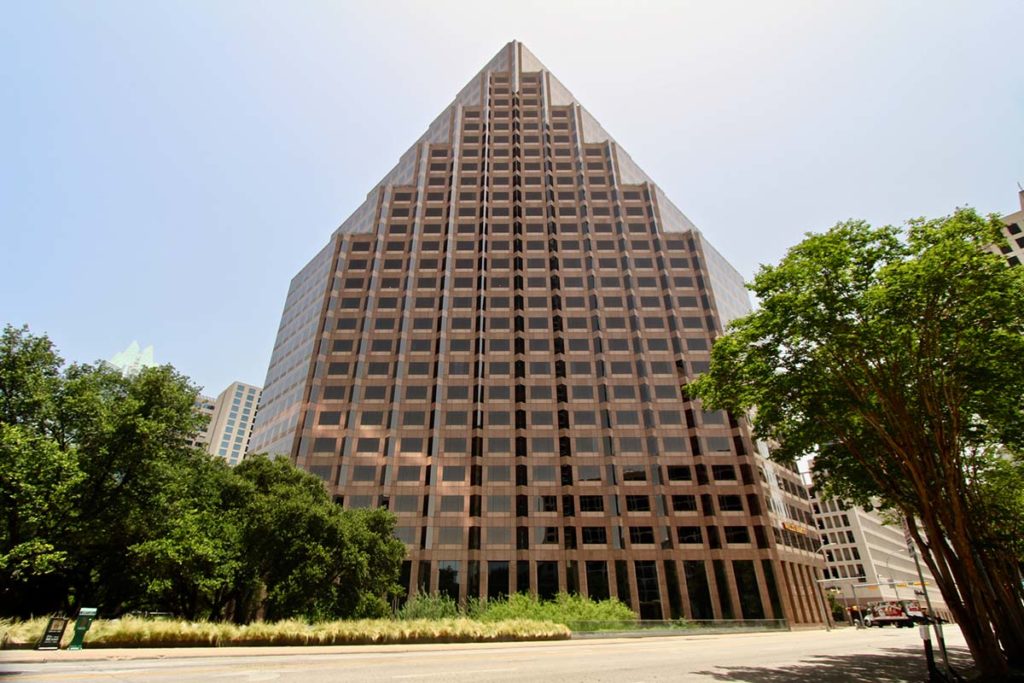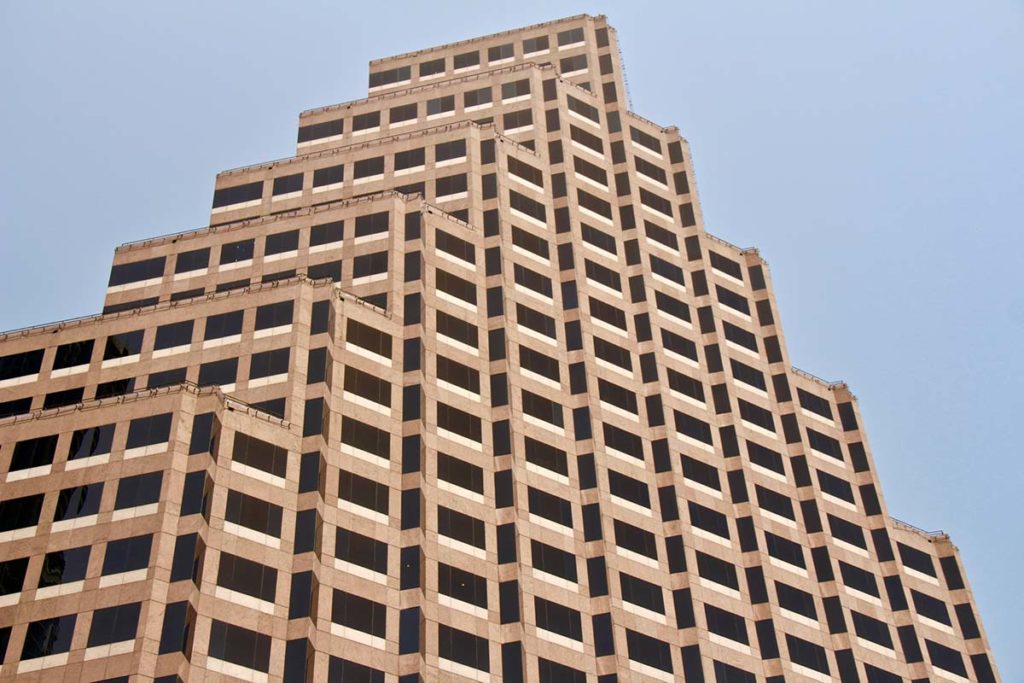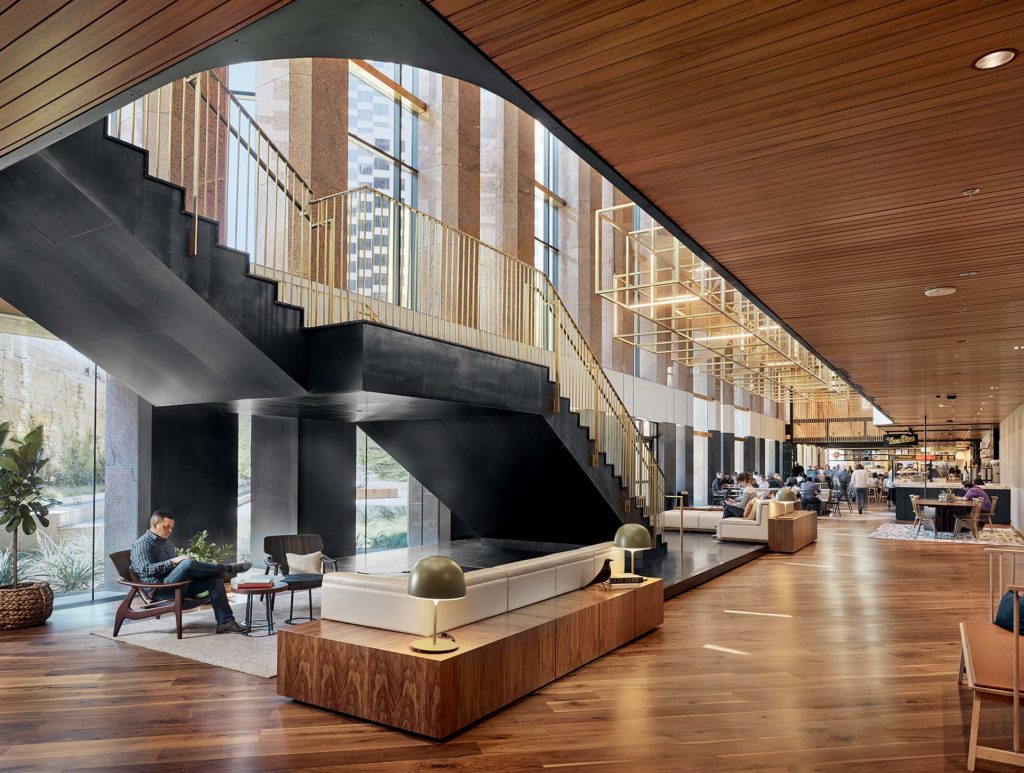Situated at the south end of Congress Avenue, One Eleven Congress plays an important role in establishing this major corridor. The building was erected during the 1970s and 1980s skyscraper boom that defined Austin’s skyline for a generation, and still holds its own among the blue glass boxes that have taken over in the 21st century.
This stepped skyscraper is a significant example of postmodern (literally “after modern”) architecture, which developed in the late 20th century as a reaction to the perceived lack of variety and ornamentation brought about by modernism. Before the construction of One Eleven Congress and its postmodern peers, downtown consisted of primarily low-rise structures. The two exceptions—the 26-story Bank of America Center (now 515 Congress) and 21-story Bank One Tower (now Chase Bank Tower)—were both textbook examples of modernism: rectangular, prismatic, monolithic, and unadorned.
One Eleven Congress literally skews its modernist predecessors; instead of a plain rectangular footprint, the building is oriented at a 45-degree angle, with chamfered ends coming to a point at the southeast and northwest corners. The stair-stepping profile is a direct response to a citywide height restriction (enacted in 1931 and since repealed) that required buildings over 200 feet to step back from the street. Once common across the United States, such setback regulations were inspired by New York City’s 1916 Zoning Resolution, which was adopted to ensure that light and air could reach the streets below. At night, the edges of each setback are illuminated by blue neon lights.
The original plan for the site included a 15-story hotel on the northwest corner, but the cancellation of that structure paved the way for a generous public plaza. Occupying a large portion of the block-sized site, the plaza was underutilized until a 2017 renovation transformed the space via a series of thoughtful landscape interventions. At the same time, the generic granite-and-marble lobby was converted into an inviting food hall populated with local eateries. Together, these interventions have revitalized one of Congress Avenue’s most prominent locations. – Bud Franck






